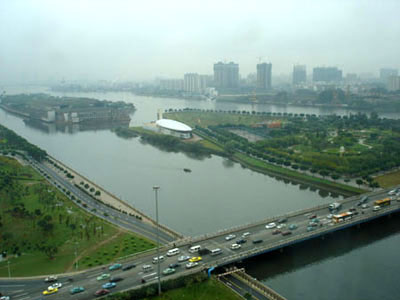A major salt tide is expected to sweep into Guangdong just before the Lunar New Year, the province's astronomy society said yesterday.
Next Monday and Tuesday, the moon will be at its closest point to the Earth, causing what is known as a perigean tide, Li Jianji, a director of the society, said.
Saltwater tides are a perennial problem for the province, generally striking during the comparatively dry months of January and February, he said.
The tide is expected to recede after the new year.
One of the potential positive effects of the cold snap that has gripped the region is that the snow and ice it has brought are expected to ease the saltwater tides in Zhongshan, Zhuhai and other costal cities.
The Pearl River
And the abundant fresh water resources of the Pearl River probably will overcome many of the negative effects of the saltwater tide, he said.
In any case, the province's water supply will be secure, as will those in Hong Kong and Macao, he said.
"We guarantee we will be able to provide least 1.1 billion cu m of fresh water to Hong Kong this year," Huang Boqing, director of Guangdong's water resource department, said.
According to figures from the Guangdong customs bureau, the province supplied 720 million tons of water to Hong Kong last year, up 16 percent on 2006.
Hong Kong will spend about HK$2.5 billion (US$347 million) on water from the Dongjiang River this year.
Meanwhile, Shanghai, which is struggling with its heaviest snows in decades, has already experienced a salt tide.
The mouth of the Yangtze River tends to be hit by salt tides in the winter or early spring, causing chloride levels to rise.
The Shanghai water authority said yesterday the salt tide that hit last Friday will last a further two days.
To ensure a steady supply of drinking water, 200,000 tons of fresh water will be transferred from Baosteel reservoir near the Yangtze estuary, Ouyang Tiaojun, a spokesman for the water bureau said.
A 24-hour monitoring system has also been set up for the upper reaches of the Yangtze.
No water use restrictions are in place at the moment as the situation is manageable, Ouyang said.
The drinking water situation has been complicated by the freezing and bursting of transmission pipes, but remains under control, he said.
(China Daily February 1, 2008)






